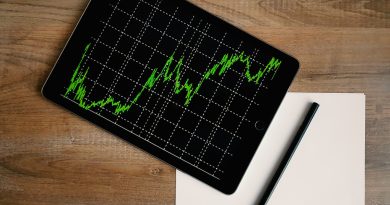6 Things To Keep in Mind Before You Start Any Kind of Investment
1. Be aware of your present financial circumstance
Understand your debt load. Take the following factors into consideration when calculating your expenses: mortgage repayments, personal tax liabilities, loans and overdrafts, credit card debts, living expenses, emergency funds, car expenses, entertainment, holidays, school and education fees, and family commitments.
You should be aware of how much you can set aside each month for investments before you start investing your money in any investment products. As a general guideline, you should pay off your debts first before investing and saving money. The more money you set aside today, then, the better it will be for your future. I’d advise also setting aside 10% of your income for unforeseen expenses. 10% is a negligible sum, therefore you won’t feel it. Keep it until you’ve been able to accumulate enough money to feel comfortable with it. Once you’ve succeeded in doing that, you can invest the extra cash you saved.
2. Put your family and yourself first
It is also advisable that at this stage, you had a basic life insurance policy to protect you and your loved ones against accidents and terminal illnesses. This is crucial because, even if you invest all of your money and lose it, in this case, you will still be adequately taken care of if you or a member of your family needs medical attention.
3. Know your level of risk
Volatility trading and short-term investments are not for you if you can’t take significant risks. It is preferable to invest in mutual or trust funds because they have lesser risk and will provide a continuous dividend. If you take on high or medium levels of risk, you might want to consider investing in equities, growth, and hedge funds.
4. Learn the art of diversification
You should diversify your investments as much as possible. Your investments should consist of a consistent mixture of bonds, mutual funds, and/or equities. In addition, you should invest in several industries and/or geographic locations. As a result, market swings won’t have a significant influence on your assets, thus reducing your overall risk. Your ideal portfolio should consist of bonds and mutual funds with 20–40% equities.
5. Research your investment options carefully
It is wise to consult a professional. But in the end, you own the money. Therefore, even though your financial advisors may have already decided what to invest in for you, you still need to perform some study and make a wise choice. This is to ensure that you are aware of your investments and capable of keeping track of them. If you are knowledgeable about your assets, you will be able to decide whether to sell or hold if your investments experience strong fluctuations.
6. Keep track of your portfolio and check its overall performance at least once a year
It’s possible that your investment is already profitable. But it’s important to be aware of how you did overall. If it is profitable, reinvest the gains and rejoice. This will serve as inspiration for you and increase your resolve to reach your financial objectives.




